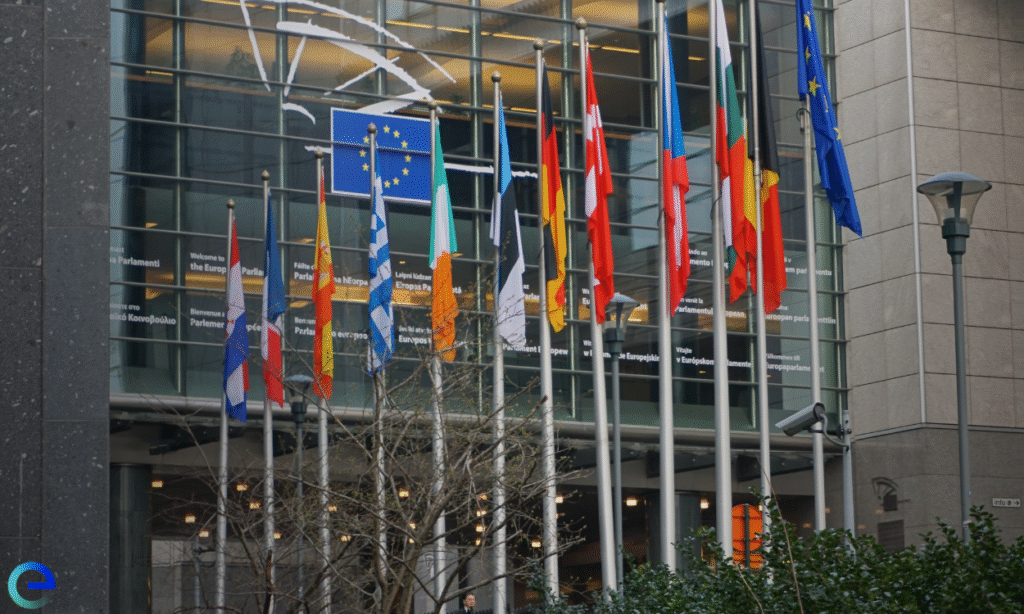
The EU Taxonomy, effective since 2020 has established a classification system for environmentally sustainable economic activities. Now many business owners wonder about its relevance to their operations. This framework helps determine which economic activities qualify as environmentally sustainable and creates a standardized approach to sustainability reporting that reaches beyond European borders.
The EU Taxonomy reporting spans over six environmental objectives, and this regulation aims to activate the European Green Deal into action so it can support financial institutions in making environmentally sound decisions.
The EU Taxonomy’s influence reaches well beyond European shores, with several countries having developed their own taxonomy frameworks. China, the UK, South Africa, and Colombia lead this trend, with South Africa and Colombia launching their green taxonomies in April 2022. Your business might feel the impact of these sustainability standards even if you operate outside the EU, especially when dealing with European partners. The UK’s framework draws heavily from the EU model, which shows how these standards create ripple effects throughout the global business community.
The EU Taxonomy framework creates a strong system to classify and define eco-friendly economic activities. Businesses need to understand this framework as they deal with sustainability reporting and green financing in today’s changing world.
Six environmental objectives make up the core structure of the EU Taxonomy that covers climate change mitigation, climate change adaptation, sustainable use and protection of water and marine resources, transition to a circular economy, pollution prevention and control, and protection and restoration of biodiversity and ecosystems. The European Commission developed these objectives as part of a detailed plan to tackle environmental challenges. It has also released a FAQ document that offers technical clarity about different parts of the framework
Economic activities must meet several requirements to qualify as environmentally sustainable under EU Taxonomy and largely contribute to at least one of the six environmental objectives. The activities should also do no significant harm (DNSH) to any other objectives while following the technical screening criteria (TSC) set by the Taxonomy Regulation.
TSCs are science-based measures that define thresholds and requirements. These help determine both substantial contribution and DNSH compliance. The European Commission adopted the “Environmental Delegated Act” to establish technical screening criteria for the four environmental objectives beyond climate mitigation and adaptation. DNSH assessment ensures that activities do not affect or harm others while helping one area.
The EU Taxonomy requires compliance with minimum social safeguards alongside environmental criteria. This ensures that “sustainable” activities meet governance standards and respect social norms. Article 18 of the Taxonomy Regulation requires activities to match the OECD Guidelines for Multinational Enterprises and UN Guiding Principles on Business and Human Rights.
These safeguards include principles from the International Labor Organization’s eight fundamental conventions and the International Bill of Human Rights. The minimum safeguards focus on four main areas: human rights (including labor rights), bribery and corruption, taxation, and fair competition. This prevents investments from being labeled sustainable if they involve human rights violations or corrupt practices.
Businesses are facing challenges that affect how they can achieve report alignment, even as EU Taxonomy framework adoption grows.
Technical Screening Criteria (TSC) require very specific data, which companies often cannot access. According to the UN PRI research, although companies could evaluate substantial contribution criteria, they found that DNSH criteria assessment is almost impossible because granular project-level data was not available. So far, from the published cases, only 1 out of 62 has met full Taxonomy compliance.
The European Commission suggested mapping NACE codes with EU Taxonomy activities at first, but this approach comes with several issues. NACE codes serve only as indicators and should not override specific activity definitions. For example, construction projects become very complicated because a single project could have 25 different economic activities. The NACE code system and EU Taxonomy were developed for different purposes, which leads to mismatches.
Small and medium-sized enterprises (SMEs) generate over 50% of the EU’s GDP and more than 63% of enterprise CO2 emissions. When the EU Taxonomy was designed, it did not consider SMEs specifically, and as a consequence, this comes with additional burdens. A Eurochambres and SMEunited survey of 2,141 companies across 25 member states showed that SMEs struggle to access sustainable financing options, especially smaller companies that have no in-house expertise lag behind because proportional arrangements do not exist.
EU Taxonomy implementation has added major financial burdens that affect business operations worldwide.
Handling EU Taxonomy compliance is not an effortless case; therefore, companies must usually assign more staff and set up a core team, which should dedicate almost half of its yearly work time to these requirements. Spending on consultancy services can be a significant expense, depending on the company’s size and industry. Large corporations typically engage with much greater fees, while financial institutions focus on higher-paid specialists for taxonomy-related work compared to non-financial companies.
Many companies hold back on updating their data systems for three main reasons: the Taxonomy’s newness, ongoing regulatory changes, and difficulty getting board approval for the high costs. System adjustments cost significant amounts in the short term. Complete overhauls may need investments of several million. To ensure adequate coverage, financial institutions incur substantial yearly expenses for multiple subscriptions to third-party data providers.
EU Taxonomy implementation works more efficiently through collaboration between different organizational functions. About 68% of organizations admit they had to restructure and train their teams extensively to implement the taxonomy’s criteria. Successful companies organize their working groups so that they bring together investment, compliance, data governance, technology, communications, and client services teams. Organizations can manage this resource-heavy process smarter and more effectively when they start small and expand gradually.
The EU Taxonomy shapes global business standards well beyond basic compliance. Its reach now affects investment strategies, financial markets, and how companies manage their risks.
The EU Taxonomy is the lifeblood that guides investments to sustainable projects and supports European Green Deal goals. Financial institutions now assess potential investments through a sustainability lens, using the Taxonomy as a tool to assess environmental sustainability. Measuring Taxonomy alignment in terms of capital and operational expenditure and revenues can help financial institutions identify transition risks in their portfolios. Research suggests that less regulated financial institutions face triple the transition risk exposure compared to 2014-2023 levels.
The European Green Bond Standard (EuGB) marks a major step forward in sustainable finance, creating uniform requirements for environmentally sustainable bonds. European green bonds must invest all proceeds in economic activities that match EU Taxonomy requirements. This standardization promotes market consistency and benefits both issuers and investors. Recent analysis reveals troubling data for green bond issuers that have shown no alignment with EU Taxonomy.
Failing to align with the Taxonomy has implications and risks for businesses, especially when there is wrong data reported or required information left out. This is where greenwashing accusations are most likely to take place. Banks provide larger loans to misaligned corporations—their average exposure is more than double compared to aligned corporations. These patterns increase litigation and reputation risks, especially when regulatory authorities expand their oversight of external reviewers. Companies struggling with misalignment should note that slow adoption of low-carbon technologies causes more than half of total misalignment.
The EU Taxonomy significantly reshapes global sustainability standards, fundamentally impacting environmental reporting and influencing frameworks beyond Europe. Its six environmental objectives provide comprehensive guidance for classifying sustainable activities, supported by rigorous criteria, safeguards, and principles. However, implementation presents substantial challenges, such as complex data requirements, classification difficulties, and increased compliance burdens, particularly affecting SMEs.
Businesses face considerable financial implications, including high staffing costs, significant consultancy fees, and necessary IT system upgrades. Despite these hurdles, the framework meaningfully influences global finance, guiding investments through sustainability criteria and standardizing sustainable finance via initiatives like the European Green Bond Standard. Companies must strategically respond to avoid risks of greenwashing and litigation, positioning themselves competitively in a sustainability-driven global economy.
